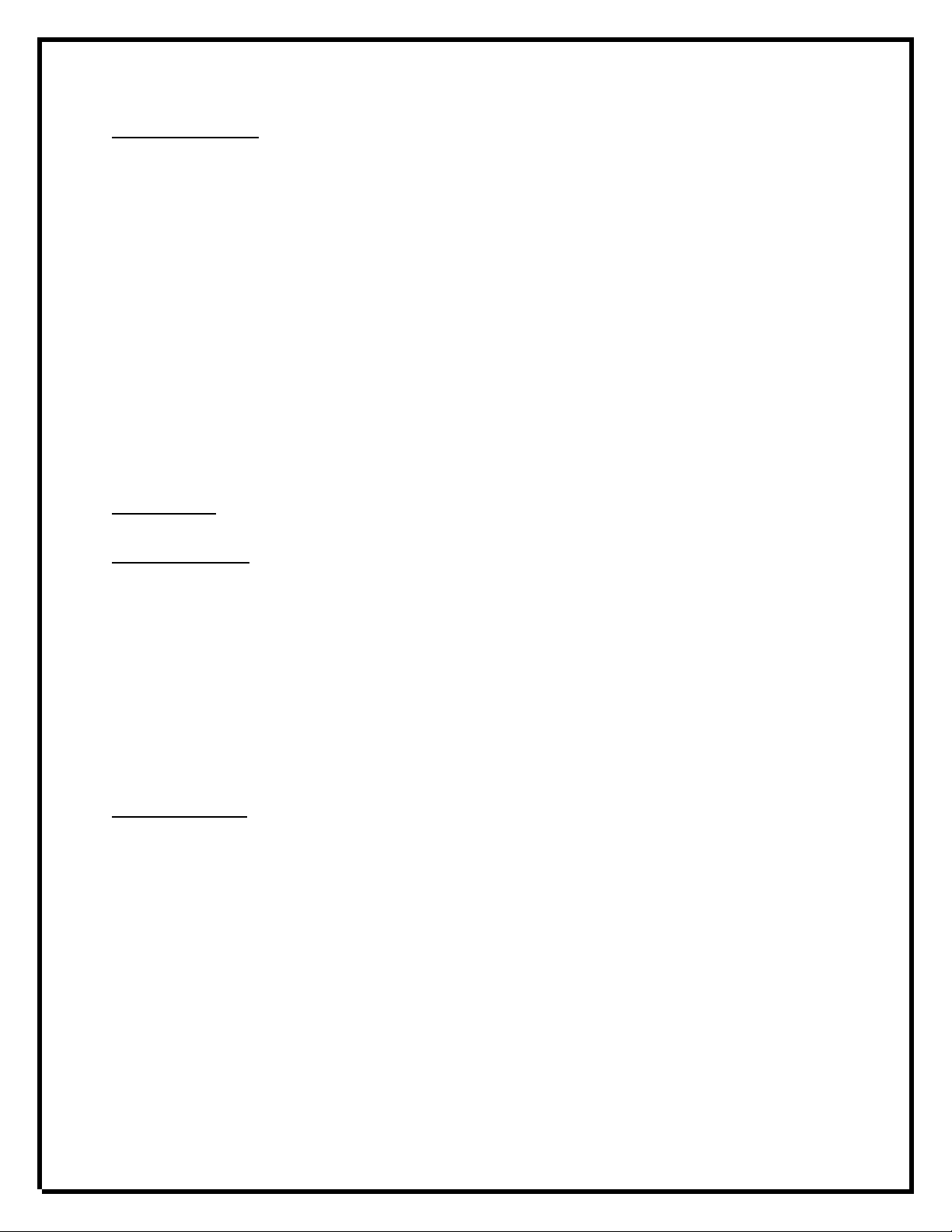
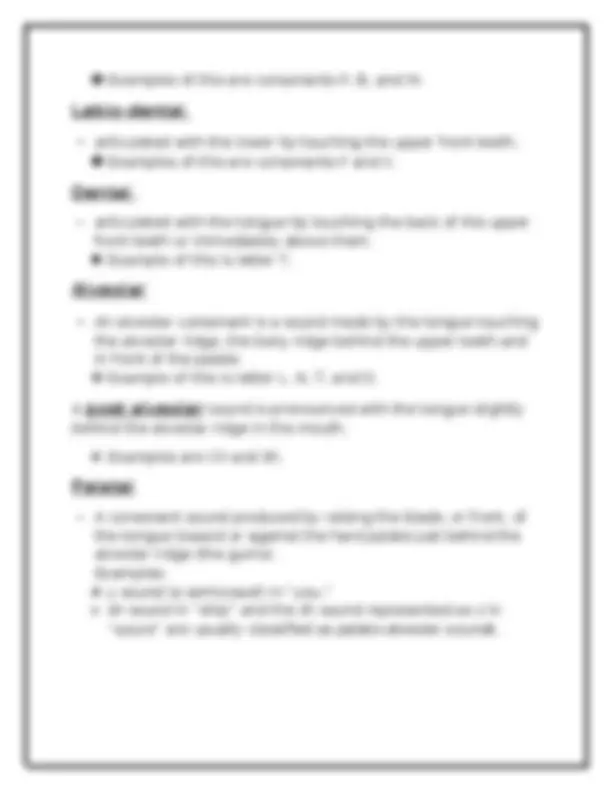
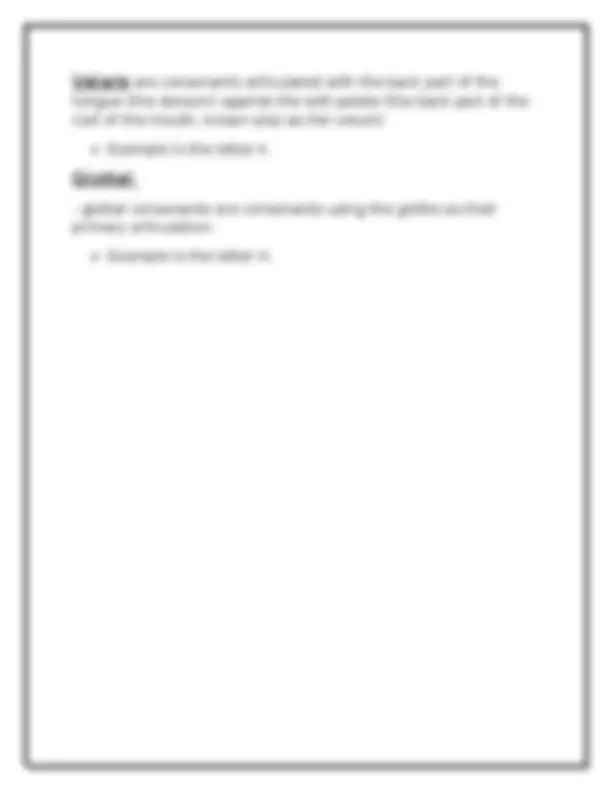
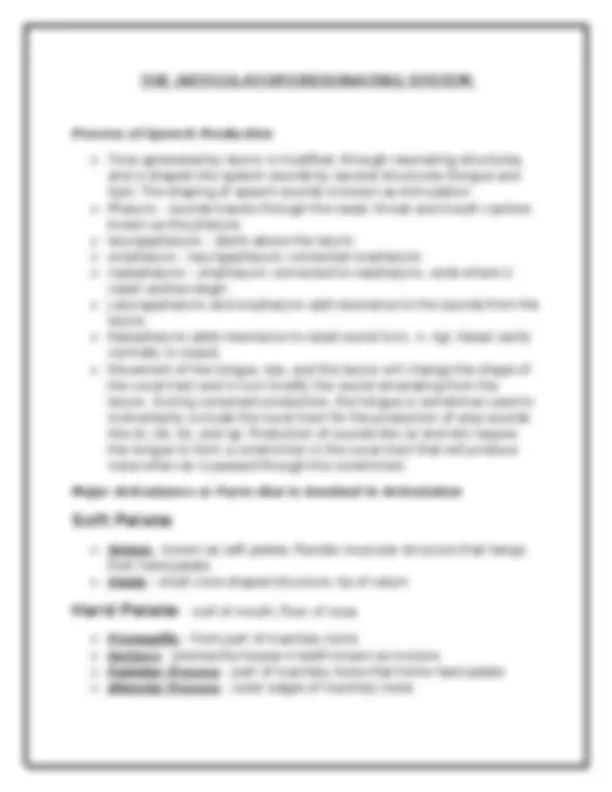

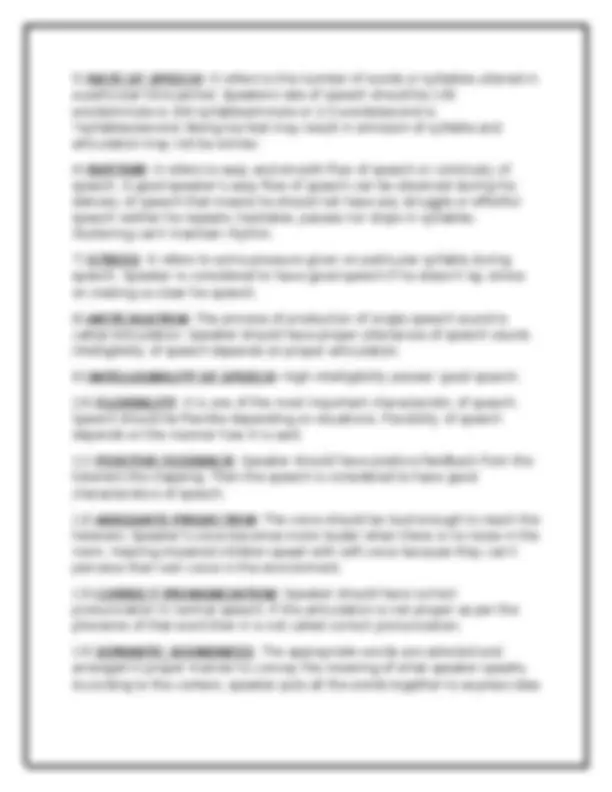
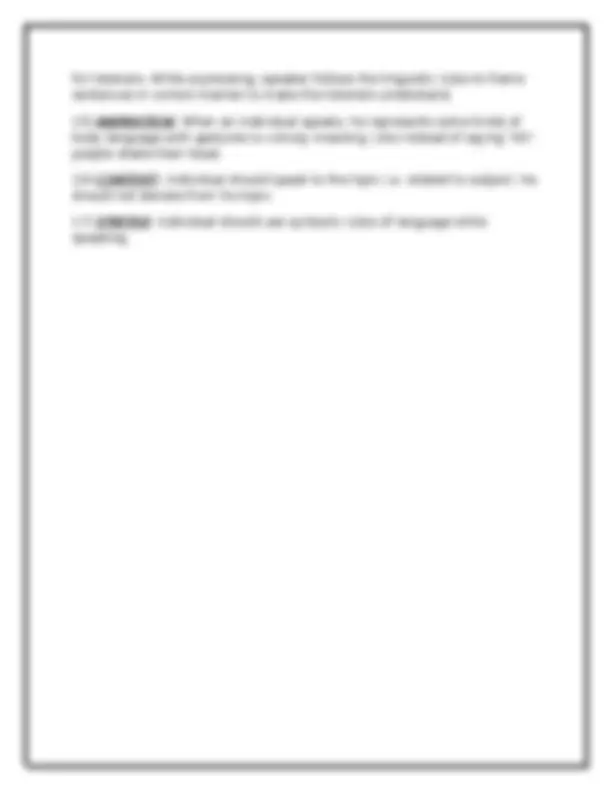


Study with the several resources on Docsity

Earn points by helping other students or get them with a premium plan


Prepare for your exams
Study with the several resources on Docsity

Earn points to download
Earn points by helping other students or get them with a premium plan
Community
Ask the community for help and clear up your study doubts
Discover the best universities in your country according to Docsity users
Free resources
Download our free guides on studying techniques, anxiety management strategies, and thesis advice from Docsity tutors
An overview of various speech sounds, including diphthongs, voicing, fricatives, affricates, nasals, and semi-vowels. It covers the articulation process, the role of the larynx and resonating structures, and the importance of proper articulation for clear speech. The document also discusses the anatomy of the mouth, including the hard and soft palate, teeth, and occlusion.
Typology: Assignments
1 / 10

This page cannot be seen from the preview
Don't miss anything!







Process of Speech Production Tone generated by larynx is modified, through resonating structures, and is shaped into speech sounds by several structures (tongue and lips). The shaping of speech sounds is known as Articulation Pharynx - sounds travels through the nasal, throat and mouth cavities known as the pharynx laryngopharynx - starts above the larynx oropharynx - laryngopharynx connected oropharynx nasopharynx - oropharynx connected to nasoharynx, ends where 2 nasal cavities begin Laryngopharynx and oropharynx add resonance to the sounds from the larynx. Nasopharynx adds resonance to nasal sound (s,m, n, ng). Nasal cavity normally is closed. Movement of the tongue, lips, and the larynx will change the shape of the vocal tract and in turn modify the sound emanating from the larynx. During consonant production, the tongue is sometimes used to momentarily occlude the vocal tract for the production of stop sounds like /t/, /d/, /k/, and /g/. Production of sounds like /s/ and /sh/ require the tongue to form a constriction in the vocal tract that will produce noise when air is passed through the constriction. Major Articulators or Parts that is involved in Articulation
Velum - known as soft palate, flexible muscular structure that hangs from hard palate Uvula - small cone shaped structure, tip of velum
Premaxilla - front part of maxillary bone Incisors - premaxilla houses 4 teeth known as incisors Palatine Process - part of maxillary bone that forms hard palate Alveolar Process - outer edges of maxillary bone
Anatomy
Anatomy
Breath control (projection) has a lot of impact on the quality of your voice. As air passes through your larynx, between your vocal folds, the level of air pressure dictates what sounds are possible. Fundamental frequency (high and low) and Intensity (loud or soft) Vocal or Glottal Fry is a sound quality that relies on the way the vocal folds vibrate, different from their standard mode of vibrating. Falsetto , like glottal fry, is another "different" mode of vocal fold vibration. It’s another vocal quality mode, and it sounds rather strange when applied to the regular speaking voice. Modal phonation that produces a plain or normal voice quality and the Non modal phonation of breathy and creaky voice quality
for listeners. While expressing, speaker follows the linguistic rules to frame sentences in correct manner to make the listeners understand.